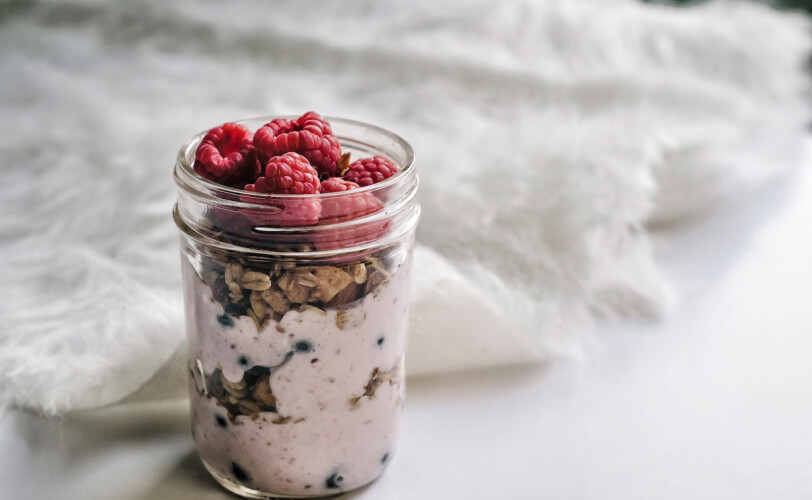Prebiotic foods: Nurturing gut health naturally
Prebiotic foods, often overlooked but tremendously impactful, operate behind the scenes to support the thriving community of microorganisms within our digestive system.

This article will guide you into the world of prebiotics, delving into the science, benefits, delicious examples, and seamless ways to infuse them into your daily meals.
The difference between probiotics and prebiotics
It's important to discern between these two dynamic players: prebiotics and probiotics. While their names might sound similar, they embody distinct roles in supporting gut health.
Prebiotics consist of non-digestible fibres found in certain foods, acting as a selective food source that fuels the growth of beneficial bacteria residing in your digestive system. Essentially, prebiotics set the stage for probiotics to thrive, enhancing their presence and impact. Clinical studies have demonstrated that this microbial feast not only fosters the proliferation of beneficial bacteria but also influences digestive and immune functions (1).
Probiotics, on the other hand, are the live beneficial microorganisms that take residence in your gut. These "friendly" bacteria contribute to various aspects of your health, including digestion, immune function, and even mood regulation (4). By introducing probiotics through foods like yoghurt, kefir, and fermented products or supplements, you're essentially adding reinforcements to your gut's defence and well-being. The interplay between prebiotics and probiotics contributes to the vitality of your gut ecosystem.
Embracing the benefits: Why prebiotics matter
A balanced gut ecosystem isn't just a matter of digestion, it's an orchestra that influences overall well-being. Prebiotics contribute to this harmony by enhancing gut microbial diversity, which in turn supports digestive health, boosts immunity, and potentially aids in weight management (2). Moreover, emerging research hints at prebiotics' role in mood regulation, highlighting the profound gut-brain connection that shapes our emotional landscape. As we nourish the gut, its impact goes beyond digestion, providing wellness throughout the body.
Prebiotic foods in action: Delicious nutrient-packed choices
Chicory root, garlic, onions, leeks, asparagus, and bananas are just a few examples of prebiotic foods you may want to start adding to your meals, in order to nourish your gut. Chicory root, for instance, boasts inulin – a potent prebiotic fibre that has been linked to improved digestion and enhanced nutrient absorption (3). Garlic and onions contain fructans – prebiotic fibres that move through your digestive tract, supporting gut health along the way.
Asparagus are rich in inulin and fibre, they add a delightful crunch to salads, quiches, and side dishes while offering a nutritious boost to your gut ecosystem. And then there's the humble yet versatile banana, a prebiotic powerhouse rich in a unique form of dietary fibre, known as resistant starch. Enjoy them as a standalone snack, blended into smoothies, or sliced atop your morning cereal.
Prebiotic food in everyday meals
Prebiotic foods can be simply incorporated into your daily routine. Begin your day with a creamy bowl of oatmeal with sliced bananas – a delightful prebiotic-rich duo. For lunch, try a colourful salad with a mix of dark leafy greens, asparagus, and a drizzle of olive oil. At dinnertime, you could use garlic and onions to sautéed vegetables or in a whole-grain stir-fry.
Ending with caution ...
I hope you enjoyed your journey into the world of prebiotics. Before you go though, one word of warning: please start using prebiotic foods in a low dose at first if you are not used to eating them regularly. This is to help your body adjust and avoid unwanted bloating or gas.
This goes for any diet or lifestyle change you may be incorporating into your daily routine, allowing your body to adjust to new foods, exercises etc. will help you to enjoy them more and stick to them long-term.
References:
1. Slavin, J. (2013). Fiber and prebiotics: Mechanisms and health benefits. Nutrients, 5(4), 1417-1435. ↩
2. Gibson, G. R., Hutkins, R., Sanders, M. E., Prescott, S. L., Reimer, R. A., Salminen, S. J., ... & Verbeke, K. (2017). Expert consensus document: The International Scientific Association for Probiotics and Prebiotics (ISAPP) consensus statement on the definition and scope of prebiotics. Nature Reviews Gastroenterology & Hepatology, 14(8), 491-502. ↩
3. Slavin, J. (2010). Fiber and prebiotics: Mechanisms and health benefits. Nutrients, 2(5), 374-377. ↩
4. Reid, G., Gadir, A. A., Dhir, R., & ProVen Probiotics, G. (2019). Probiotics: Reiterating What They Are and What They Are Not. Frontiers in microbiology, 10, 424.

Find a nutritionist dealing with Gut health
All nutrition professionals are verified



